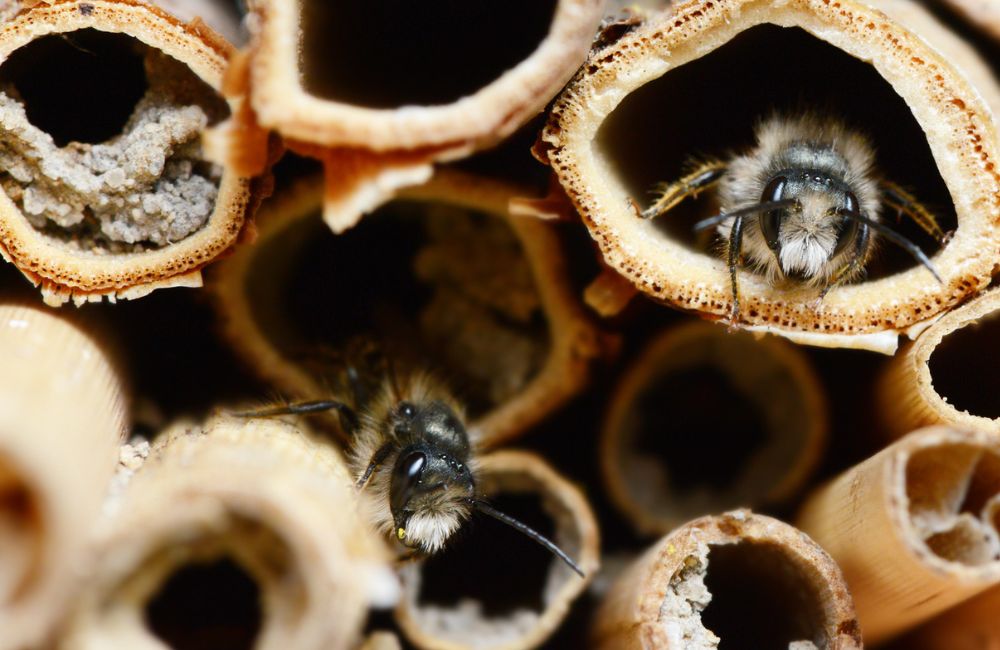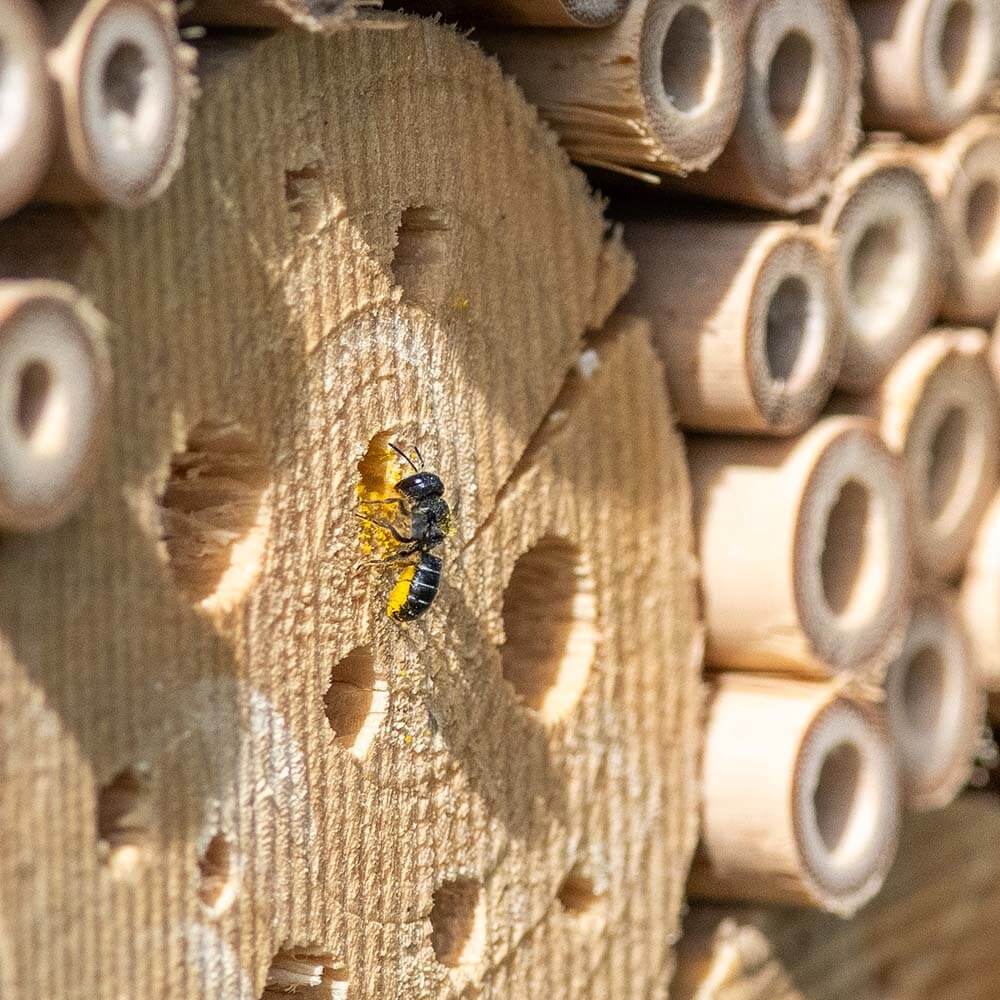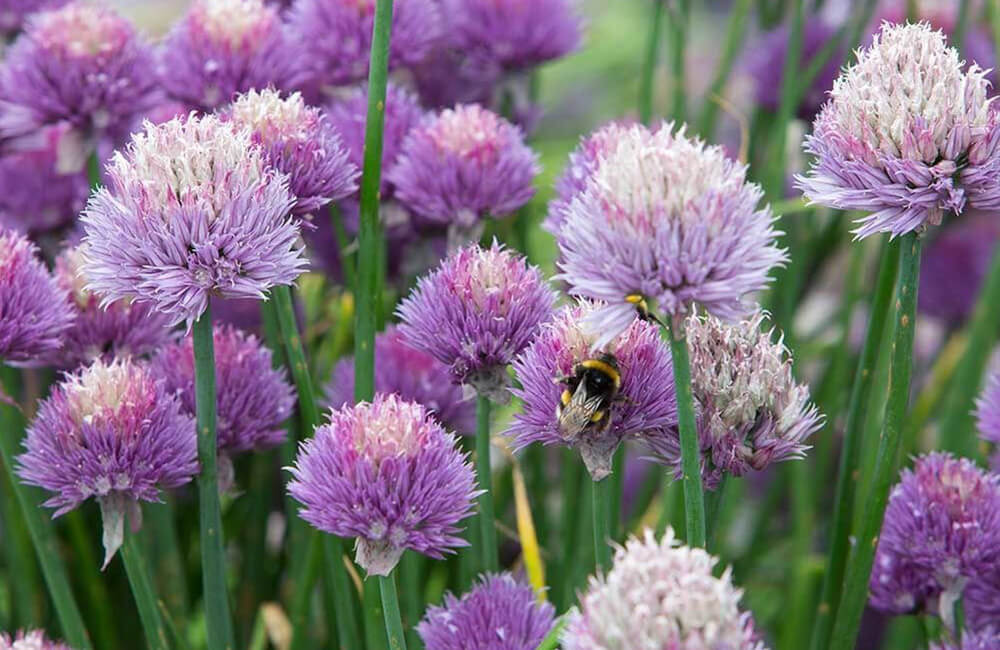Bees play a crucial role in pollination and maintaining biodiversity. With natural habitats decreasing, providing shelter for solitary bees is a great way to support these essential pollinators. A bee house, or bee hotel, offers a safe place for them to nest and lay eggs.
In this guide, we will show you how to make a simple yet effective bee house for your garden or balcony.


Why build a bee house?
Solitary bees, such as mason bees and leafcutter bees, do not live in hives like honeybees. Instead, they nest in small cavities in wood, hollow plant stems, or even holes in the ground. A well-designed bee house mimics these natural nesting sites, giving bees a safe place to reproduce.
Benefits of a bee house:
- Supports local pollinators and increases biodiversity.
- Helps improve the yield of fruit, vegetables, and flowers in your garden.
- Provides an educational opportunity to observe bees up close.
Materials you will need
To build a bee house, you will need the following materials:
- A wooden box or a block of untreated wood
- Hollow plant stems (such as bamboo or reeds) or drilled wood blocks
- A saw, drill, and sandpaper
- A roof to protect from rain (optional)
- Wire or nails for hanging
Important: Avoid using treated or painted wood, as chemicals can be harmful to bees.


Step-by-step guide to building a bee house
- Choosing the right location
Select a sunny, sheltered spot that is protected from strong winds and rain. Bees prefer warm conditions, so placing the house in a south or southeast-facing direction is ideal.
- Preparing the housing structure
- If using a wooden box, make sure it has a back panel and a small overhanging roof to protect the nesting holes from rain.
- If using a block of wood, drill holes of varying sizes (between 3 and 10 mm in diameter) to attract different bee species. The holes should be at least 10 cm deep but must not go all the way through.
- If using bamboo or reeds, cut them into 10–15 cm lengths and ensure the ends are smooth to prevent injuries to the bees.
- Assembling the nesting material
- Pack the hollow stems or drilled blocks tightly inside the wooden box so they do not move.
- The openings should face outward, creating easy access for the bees.
- If using drilled wood, sand the holes to remove splinters.
- Installing the bee house
- Securely attach the bee house to a wall, fence, or post at least 1 to 1.5 meters above the ground.
- Ensure it is stable and does not sway in the wind.
Maintenance and care
A bee house requires little maintenance, but a few simple steps will keep it safe and effective:
- Keep it dry: Place the bee house under an overhang or attach a small roof to prevent water damage.
- Check for parasites: Some insects may invade the house. If you notice unwanted pests, clean out old materials in early spring.
- Replace worn-out stems: Every two to three years, replace bamboo or reeds to keep the house in good condition.


Encouraging bees to visit
Simply placing a bee house in your garden is not always enough. To attract bees:
- Plant bee-friendly flowers such as lavender, wildflowers, and fruit blossoms.
- Provide a water source by placing a shallow dish with stones for bees to land on.
- Avoid pesticides to keep your garden safe for pollinators.


Creating a bee house is a simple yet impactful way to support local pollinators and contribute to biodiversity. Whether you place it in a large garden or on a small balcony, a well-maintained bee house will provide a safe haven for solitary bees and help sustain plant life in your area.
Would you like to take your garden even further in supporting nature? Consider planting more native flowers or setting up an insect hotel to create an even more wildlife-friendly environment.
